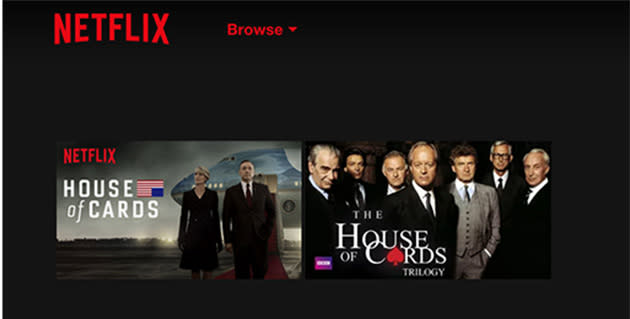TV Consumption After The Streaming Revolution

Photo credit: Getty
When I was growing up, I would often hear my grandmother tell stories about how TVs first started to become popular when she was a teenager. Before that, her family would gather around the radio set to listen to news, talk shows, and even this thing called "radio drama," which was apparently like a TV series except it was all on narrated on audio.
That was the first revolution: the birth of TV.
My mom would tell me how she grew up watching TV in black and white, but that at some point in her early teens, her dad came home with this new state-of-the art technology: color TV. During the heydays of color TV, there were only a couple channels broadcasting in full color, and since they were very expensive, only a few people could afford the devices. That was revolution number two: color.
By the time I was a kid, everything was in full color, and a basic cable subscription included more than 50 channels. I used to think that was that: TV had reached its zenith, and there was no more evolution to be had. Boy, was I mistaken.
Who Needs Cable These Days?

I went apartment hunting the other day, and the realtor proudly announced that one of the apartments he was showing had a bunch of perks, "like that fact that cable is included in the price."
Puzzled, I looked at my roommate, and we both silently though the same thing:
What in the world would we need cable for?
That's right: I can barely remember the last time I actually watched TV on cable. Now, don't get me wrong, I am by no means one of those people who just don't watch TV. It's just that I watch everything through my computer. Sometimes I'll connect my computer to the TV with an HDMI cable, or just stream things directly through the TV's Wi-Fi connection. But flipping through the channels to see "what's on"... well, that just seems archaic to me.
There was Tivo and other DVR services sometime in the early 2000s. It really was quite a relief not to have to wait for whatever show you wanted to be broadcast at a specific time. Then there was Netflix, but not the one we tend to think of today. Do you remember that Netflix started out renting DVDs by mail? That too was quite some progress as compared to driving to Blockbuster and then inevitably paying late fees.
But then at some point in 2011, Netflix separated off its TV streaming service from its DVD rental plan, and started selling the two separately. I would point to that as the point when the third TV revolution occurred: streaming.
How I Watch TV After its Third Revolution
I binge watch series.
I think I should admit it. I remember when the last season of House of Cards came out this February. I was done watching it within a week. And what about Narcos? I finished that in just one weekend. Orange is the New Black, Better Call Saul, Fargo, The Americans... pretty much the same story. And hey, it's not just Netflix. There's HBO Go, Hulu, Amazon Prime, iTunes, and many more (I think the last two are especially good for finding rare and foreign movies and shows).

But what do you watch when you've gone through all the blockbuster series? And, given the vast universe of possibilities to watch, how to choose. (Because as we know all too well, there are some really bad show and movies out there.)
What People Are REALLY Watching
One strategy I have found useful is to track some of the pirate streaming sites to see what people are watching there. I am in no way endorsing them, however, whatever you think about them, one thing is certain: they reflect what people are actually watching (in other words, what is actually good), rather than what companies want you to watch.
With Netflix and other streaming companies recently entering the TV production business, they have a stake in some shows being preferred above others, so it's good not to settle for their "top picks" and "trending now" sections.
What About the Old Dinosaurs?
As subscriptions to on-demand streaming services continue to increase, old cable companies become less and less profitable. New players are on the map, and giants like Comcast and DirecTV no longer hold a monopoly. But that's actually a good thing for the consumer.

Photo credit: Getty
Traditional TV services are striving to meet the demands of TV viewers who want to be able watch programming whenever they want, not when some arbitrary schedule tells them to. That's exactly what HBO did when it released HBO Go in 2010. According to some, Comcast and NBC are in talks to release their own streaming service through Apple TV. Apple too, has just released a new version of Apple TV that will integrate a variety of streaming and online television services. It seems everyone is trying to create the ideal TV plan. And all the while traditional content providers are reducing their prices in the hopes of becoming more competitive. All of this means that consumers have more and better options for TV watching.
Better For Consumers
And while internet TV is on the rise, some programming is still mainly available trough traditional providers. Sports and news, since most people want to watch them in real time, remain one of cable and satellite TV's biggest selling points. Will these too eventually be taken over by streaming and on-demand services? For the time being it's hard to say.
We are far from the time of sitting in front of a black and white TV set, and watching whatever it fed us, and waiting through commercials. Today we binge watch series, watch only the programming we choose, and watch at whatever time we want. Oh, and everything is in HD. But surely this is far from the last TV revolution.
How do you think television will change in the years to come?
